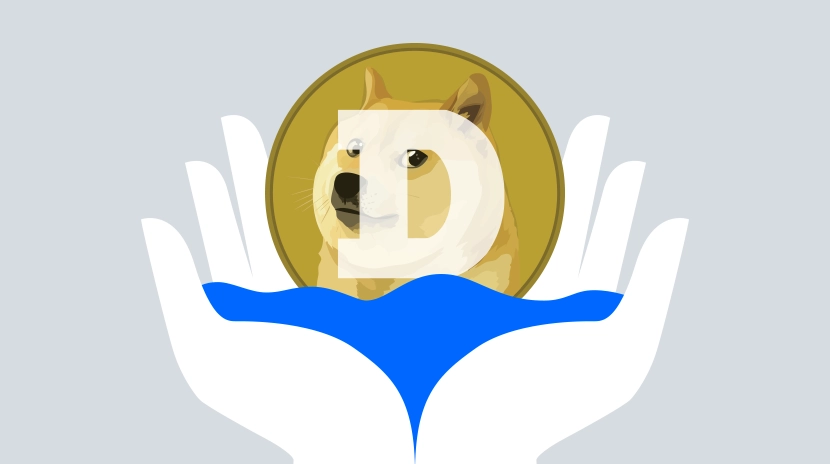公正なリリース:需要駆動型トークンアンロックの新しいトークノミックスパラダイム
フェアリリース:新しいトークノミック・パラダイム
公開された @dr.daoist/time-scheduled-token-unlocks-an-elephant-in-the-room-741e1ee0e781">タイムスケジュールされたトークンのアンロック:部屋の中の象、タイムスケジュールされたアンロックは「低浮動高FDV」の表面的な問題の真の原因です。経済的に合理的な方法は、スケジュールされた時間によるトークンの発行を放棄し、代わりに市場の需要に応じて行うことです。
時間スケジュールされたロック解除は基本的な経済原則に違反するだけでなく、不公平です。それらはコミュニティのトークンのロック解除(エアドロップなど)を優先するように見えますが、実際には、チームやベンチャーキャピタリストがロック解除時の実際のトークン需要に関係なく退出できるようにすることで、トークン価格をほぼ確実に下落させます。さらに悪いことに、通常は「優先コミュニティのロック解除」という名目の下には、チームやベンチャーキャピタリストの利益が隠れている場合があります(エアドロップやトレジャリートークン、エコシステムトークンなどを通じて)。これにより、彼らはトークンリストに迅速かつ秘密裏に出口を急ぐことができます。その時点で、ベスティングスケジュールは単なる見せかけであり、トークン価格はおそらくすでに急落しているでしょう。
この策略はすでに公然の秘密となっており、コミュニティと市場は、CEX上場でのVCが支援するトークンのデビューの精彩を欠いたパフォーマンスと、ミームコインへの圧倒的な関心のシフトを通じて、明確な不満を表明しています。なぜミームなのか?なぜなら、それらは、チーム/VC/CEX連合が演じる不器用なスキームと比較して、公正に立ち上げられているか、少なくとも開始時にはより公平であると認識されているからです。しかし、VCが支援するトークンの場合、VCはTGEの前にすでに低価格で購入しているため、公正なローンチは不可能です。
だから、ここで解決策は何ですか?
答えは「フェアリリース」にあります:新しいトークンは需要の増加に応じてのみリリースされ、各リリースですべての利害関係者に公正な分配が行われます。それに加えて、これはインフレに強いです。プロジェクトが外部性(つまり収益)を生成するかどうかに応じて、フェアリリースには3つのバージョンがあります:
- ねずみ講バージョン(収益なし):流通するトークンが消費され、燃やされるたびに、同量の新しいトークンがリリースされ(チーム/VC/コミュニティ/トレジャリーなどに比例して分配されます)、流通する供給量は一定に保たれます。
- HODLバージョン(収益付き):ポンジバージョンと同様ですが、インフレ量の新しいトークンがリリースおよび配布され、インフレ部分は収益を使用してすぐに買い戻しと焼却が行われ、流通供給量が安定して保持されます;そして
- 収益を伴うムーンショットバージョン:HODLバージョンに似ていますが、収益の一部がインフレリリースの買い戻しではなく、トークン価格の上昇に使用され、潜在的な「上昇のみ」の効果を生み出します。
以下はすべての3つのモデルの詳細なウォークスルーです。
フェアリリース1.0:収益がないプロジェクト向けのポンジバージョン
Web3プロジェクトについての1つの残酷な事実は、X-to-Earnナラティブの崩壊から2年が経過しても、それらの大部分がまだ外部性を欠いていることです。つまり、これらのプロジェクトはまだ外貨/トークンで表される収益を生み出していません。これらのプロジェクトのトークノミクスは、避けられないほどポンジノミクスに傾いています。これは、米国財務省や連邦準備制度が経済を支えるためにお金を印刷し、移動させることと非常に似ています。トークンが信用を失い、発行者がその通貨を印刷する権利から得た利益(すなわち、シニョリッジ)を失うまで、バブルが崩壊するまで。
それにもかかわらず、フェアリリースはまだ機能しています。少なくとも公平でインフレに強いトークンのロックを実現するためには、これらのプロジェクトにはポンジバージョンが必要です。鍵はインフレリリースを行わないことです。こちらがその仕組みです。
- T₀で、初期の流動性プールには$TOKENと$USDTが含まれており、初期レベルで$TOKENの価格を設定しているものとします;
- T₀とT₁の間には、ある量の$TOKENが消費され(たとえばコミュニティの参加を通じて)、燃やされ、流通供給量が減少し、価格が上昇する。
- T₂で、同等量の$TOKENがリリースされ、燃焼された供給を回復し、$TOKENの価格を元の水準に下げながら、同時に株主に対してトークンを比例配布します。
流通供給されるトークンの流出量と$TOKENの価格には変化がなく、トークンのアンロックは公平な方法で全ての利害関係者に対して行われました。

フェアリリース1.0:ポンジバージョン(収益なし)
しかし、ネズミ講の性質上、これは実際にはフェアリリースの不自由なバージョンであり、リリースのすべてのラウンドは循環供給におけるコミュニティの利害関係を効果的に希釈します。バーンによる消費は主にコミュニティから行われますが、これらのバーンされた供給を回復するために新たにアンロックされたトークンの一部のみがコミュニティに配布されます。メカニズム的には時間ベースのロック解除よりも賢明ですが、このバージョンはコミュニティの費用でインサイダーに利益をもたらします。
これがFair Release 2.0が必要な理由です。
Fair Release 2.0:収益を上げているプロジェクト向けのHODLバージョン
真の公正さを実現するより正当なFair Releaseのバージョンは、インフレリリースを介してアンロックされ、その後にバイバックとバーンによって相殺されるものです。これには、外貨/トークンで表される収益を生み出すために、プロジェクトが必要です。
これは「HODLバージョン」と呼ばれ、収益性が持続可能なトークン価格に重要な保護を追加するための公正なリリースのバージョンです。以下のように機能します:
- T₀で、初期の流動性プールに$TOKENおよび$USDTが含まれていると仮定して、$TOKENを初期レベルで価格設定(Ponziバージョンと同じ);
- T₀とT₁の間で、$TOKENの一定量が消費され、焼却され、流通量が減少し、価格が上昇します。一方、プロジェクトは$USDTで収益を生成します。
- T₂:$TOKENのインフレ量が放出され、以前に燃やされた供給を超えるようになります。このインフレ部分は、すべてのステークホルダーのアンロックの役割を果たし、$TOKENの価格を初期水準以下に下げます。
- T₃では、すべての収益は解放された余剰の$TOKENを買い戻し、燃やします。これにより、流通供給量とトークン価格がそれぞれ初期レベルに回復します。
このバージョンでは、公平なトークンのロック解除と配布のラウンドの後、トークンの供給と価格の影響はほとんどありません。

フェアリリース2.0:HODLバージョン(収益付き)
フェアリリース2.0は、ポンジバージョンの前の問題を修正し、トークンのアンロックがリリースのインフレ部分内でのみ発生するようになりました。コミュニティは、希釈の懸念なしに継続的なエンゲージメントを奨励するため、トークンの消費とリリースのプロセスを通じてステークを維持することができます。これにより、ステークホルダー間のトークンの安定した比率がトークンの寿命を通じて維持されます。
しかし、物語はここで終わるわけではありません...プロジェクトが収益を生み出した場合、収益の一部をリリースバイバックに使用し、残りをトークン価格を引き上げるために使用できます。それは完全に可能です-それが私たちがフェアリリース3.0を持っている理由です:魔法の 'up-only' モデル。
フェアリリース3.0:収益を上げるプロジェクトと、'上昇のみ'トークン価格を目指す野心を持つバージョン
HODLバージョンは需要駆動型のトークンアンロックと公平な配布の主要な目標を達成しますが、トークン価格への影響は中立的です。公平なリリースの高度なバージョンでは、連続的なトークン価格の成長をもたらす正のフィードバックループを導入します。公平なリリースの各ラウンドで、収益の一部が流動性プールに投入され、トークン価格を押し上げるために使用され、さらにコミュニティのホールドと参加を促進します。私はこれを公平なリリースの「ムーンショットバージョン」と呼んでいます。なぜなら、フライホイールが回り始めると、まるで雪だるまが転がるようです!
以下に詳細な手順を示します:
- T₀での初期流動性プールには$TOKENおよび$USDTが含まれていると仮定し、$TOKENを初期レベルで価格設定する(ポンジ&HODLバージョンと同じ);
- T₀とT₁の間:一定量の$TOKENが消費され、燃やされ、流通供給量が減少し、価格が上昇します。一方、プロジェクトは$USDTで収益を生成します(HODLバージョンと同様);
- T₂: $TOKENのインフレ量がリリースされ、以前に燃やされた供給量を超え、インフレ部分がすべてのステークホルダーのアンロックとして機能するため、$TOKEN価格が初期レベル(HODLバージョンと同じ)を下回ります。
- T₃:収益の一部は、追加された$TOKENを買い戻して燃やし、流通供給量とトークン価格を元のレベルに戻します。残りの収益は流動性プールに注入され、$TOKEN価格が上昇します。
このモデルでは、公正なリリースの各ラウンドは、トークン価格に対して正の影響をもたらします。これはまるで魔法のようです-アンロックが増えるにつれて、トークン価格が上がるのですか?

フェアリリース3.0:ムーンショットバージョン(収益あり)
HODLバージョンと比較して、Moonshotバージョンはより正確な数学が必要です。リリースのための最適なインフレ率の設定と収益の理想的な分割の決定を行い、インフレバイバックの一部がカバーされ、残りはトークン価格を意味ある程度引き上げるようにします。これらの計算を超えて、残ることは慎重な実行だけです。
最終的な考え
多くの人々が、暗号市場のパフォーマンス不振を流動性不足、イノベーションの停滞、または物語の疲労に帰する一方で、実際の問題は不公平な富の再分配にあり、それが草の根参加者(コミュニティ/小売業)と機関投資家(プロジェクト/VC)の間の成長する二分化を助長していることに気づいている人はほとんどいません。
分散化は、より公正な権力と富の再分配のためのイデオロギーです。十分な流動性、技術的な飛躍、または物語の熱狂があっても、TradFiモデルを超えた生産的な関係を改善しない限り、Web3は繁栄することはできません。
より公平な財産再分配へ向けた最も簡単なステップは、トークノミクスの修正です。
フェアリリースは、支配的な時間スケジュールに基づいたトークンのロックを最も簡単に修正するものとして機能します。それは基本的な経済原則に従い、「低フロート高FDV」問題の根本的な原因を解決します。それはロケット科学ではなく、すぐに実装可能です。また、流動性プールを介して、外部性を持つプロジェクトに対してフライホイール効果を創出するためのレバレッジポイントを提供します。
VCバックトークンにとって、もっとも公正で持続可能なトークンノミックスモデルとなる可能性があります。
パラダイムシフトに参加して、革命の一部になりましょう。
免責事項:
関連記事

Chill Guy(CHILLGUY)とは何ですか?

Moonshotとは何ですか? Moonshotについて知っておくべきことすべて

Fartcoinとは何ですか?FARTCOINについて知っておくべきこと

マスクのDOGEに対する愛憎関係の概要

MemeFiとは何ですか?詳細な調査
